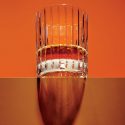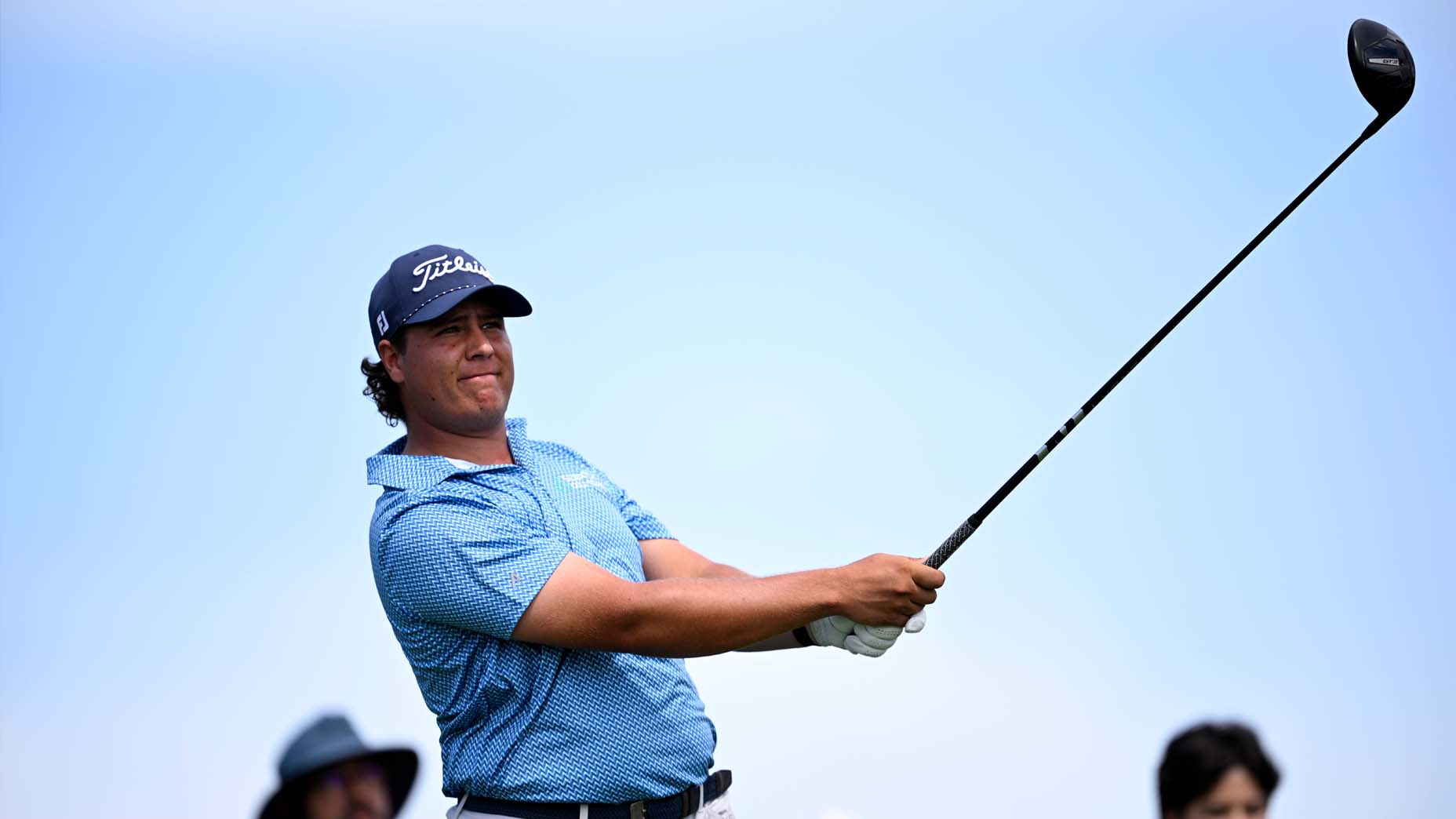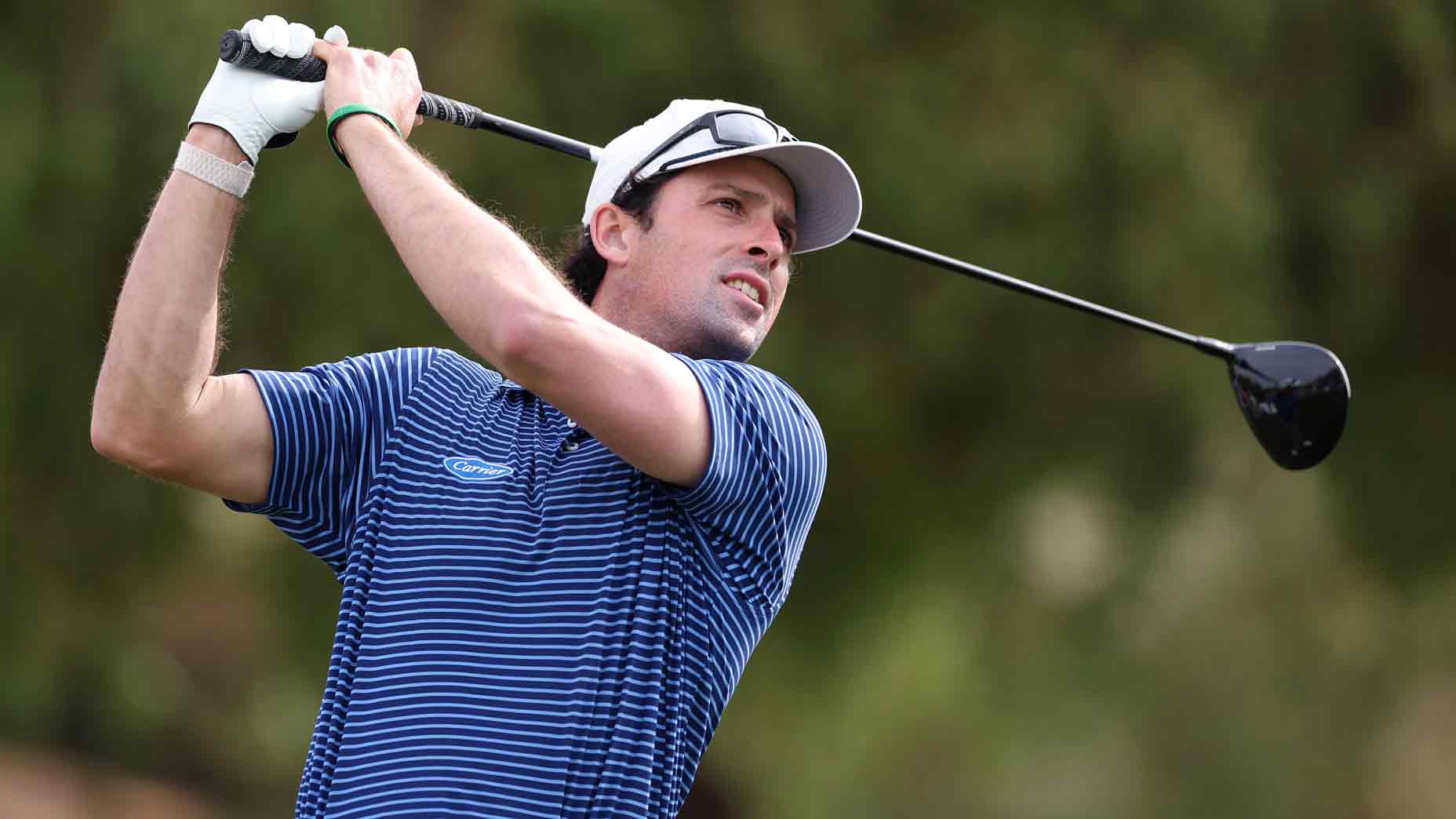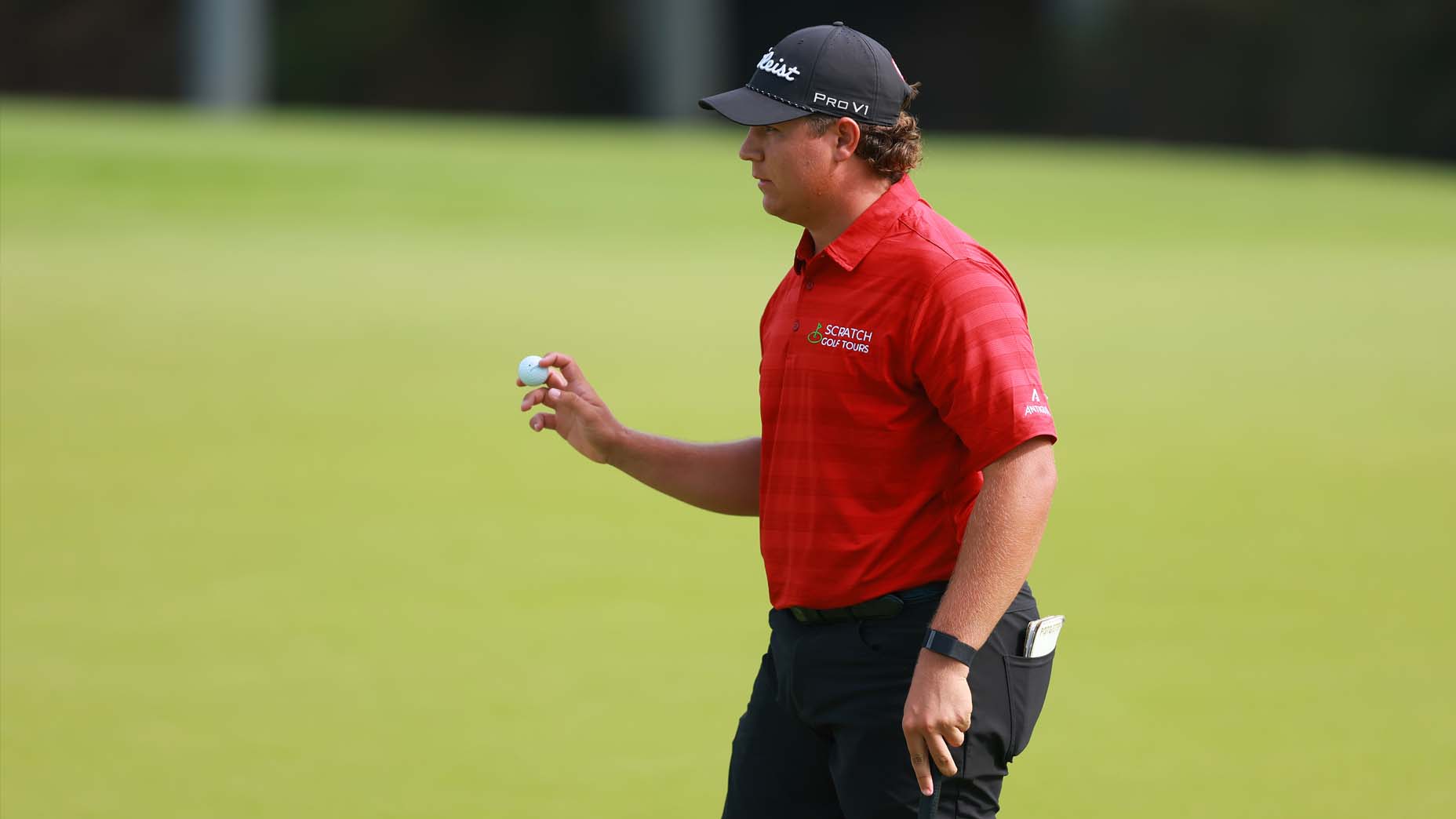Back in the time of King Arthur and the first season of Game of Thrones, everyone walked around all day with nothing to do except drink wine from silver cups. Maybe they were chalices, but either way they drank a lot of wine, and you would too if you lived in a world without plumbing. Right around then, give or take a few centuries and dragons, the Open Championship was first played in Scotland, and the champion golfer of the year took home a red leather belt, like he’d just won the WWF title.
Since some of those guys held their britches up with a piece of rope tied around the waist, a regular belt would have been a nice get, but the fancy one was useless and was eventually retired after Young Tom Morris won it three years running (330–328 BC). And a good thing, too, because it was replaced by a claret jug, which is now the game’s most recognized trophy, and moreover brings us to the point that golf champions and wine have some history together.
The Claret Jug doesn’t look like Tyrion Lannister’s personal wine decanter by accident. The taste that Brits have for claret — basically any red wine from Bordeaux — evolved during the Middle Ages, when the Normans ruled Bordeaux, among other places, and King John granted the region tax exemptions to make some easy friends. That’s when Bordeaux’s standard-issue clairet became a thing for the English, and why we have a Claret Jug instead of a chardonnay jug.
One hundred years after the first Open Championship, Arnold Palmer showed up to play in the Open at St. Andrews, and pretty soon afterward Tour pros who had big game started making piles of dosh thanks to television. Eventually, a lot of players started making silly, what-do-I-do-with-all-this-money money, and we ended up with a trend of golfers gluing their name to wine bottles. If you count the defunct ones, there are more than 20, and you have to imagine that had he not perished too soon in a plane crash, Champagne Tony Lema would have been among the best of the swinging vintners.
Having quickly covered some 20,000 years or so of golf and wine history, we’ve arrived at the central question: Are golf enthusiasts — people who would cross a minefield topped with flaming broken glass to pay $50 for a beer koozie with the Masters’ logo — likely to show the same exuberance when it comes to famous-golfer wine labels?
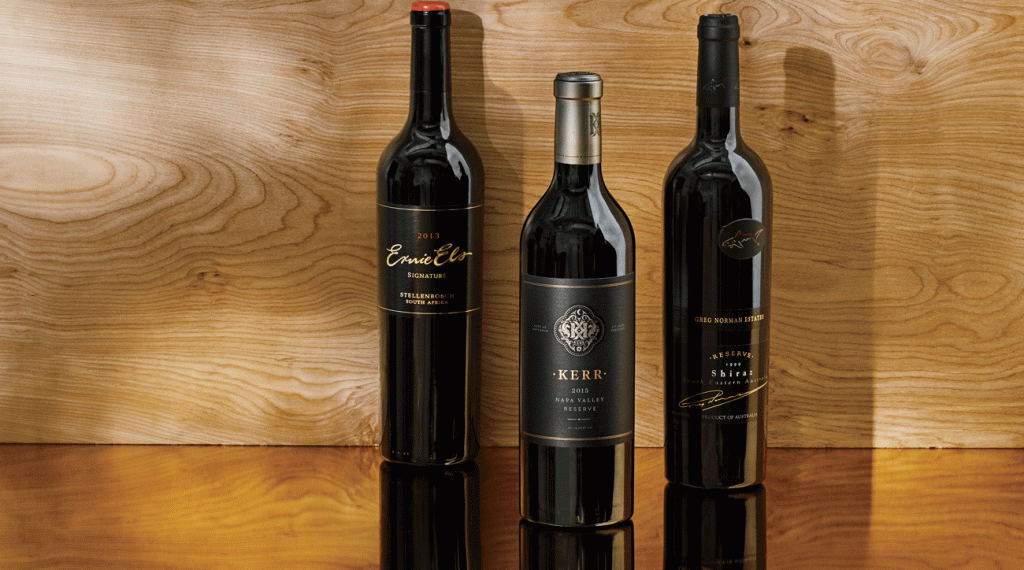
Now, if you’re a wealthy professional golfer and you invest in an eponymous wine brand, you are really, really hoping that some of the millions of people who pay to play courses you’ve designed and to wear shirts you wear and swing clubs you swing will also buy your wine. Or you are quite determined to impress the hell out of dinner guests. You could conceivably convince me that it’s a passion, sure, but when you create something, you want people to admire it. With wine, they can’t do that if they don’t buy it. So you see—and here’s the thing — the answer to our central question is, in a word, not
bloody likely.
To ye who might riseth in defenseth of Sir Nick Faldo, joineth ranks with Greg Norman, signeth up with Goosen’s Grenadiers, or enlisteth in Els’ Light Cavalry to smite my bald, exceedingly large melon, I sayeth, whoa Nellie and chillaxeth. Their wine is mighty fine, porcupine (to semi-paraphrase Dan Jenkins, I think from The Dogged Victims of Inexorable Fate, the best golf book ever. Stop arguing and just read it.).
According to Wine Spectator, of which I am a new member until I forget to pay the bill, there are some exceptional golfer wines — a few so good, in fact, that you might altogether just think of them as brilliant and ignore the whole golf thing. Among these are Greg Norman Estates’ Shiraz McLaren Vale Reserve 1998 and Shiraz South Eastern Australia Reserve 1999; Ernie Els’ Stellenbosch 2005 and 2013, and Cape Winemakers Guild Stellenbosch 2010 and 2012; and Cristie Kerr’s Napa Valley Reserve 2013 and 2015. If you appreciate superb wine and can find these, drink ’em, especially those of Kerr, who was recently knighted a sommelier of some sort and who seems to genuinely soak in the tradecraft of being a winemaker.
The defense rests. Our central point is not that golfer wines are hooey, but rather, that there’s no correlation between a golfer’s fame and the likelihood that their wines will be blindly purchased by golf groupies. Exhibit A to support this point comes from a friend of the column who owned three wine retail stores in the greater Phoenix area, which, as you know, is a bit bonkers for golf. Our fellow professional says there isn’t much loyalty or inclination on the part of his pals who tee it up regularly to drink golfer wines, and that, overall, they don’t sell well, mostly moving as gifts purchased by nongolfers for golfer friends. He adds that the price point for many golfer wines is too low to merit serious consideration by wine
aficionados.
So there you have it, golfer vintners: Your clubs may do the talking on the course, but your wine had best do the talking in the glass. Exhibit A is the only exhibit, although I did ring up Napa Valley Country Club to see if they have any golfer wines available for members. They do not, but that is not a repudiation of golfer wines. Turns out the only wines offered by the bottle are all produced by members. There are exceptions for wines by the glass, but alas, no golfer wine avails there either. If you want to get on that wine list, well, as they say, join the club.
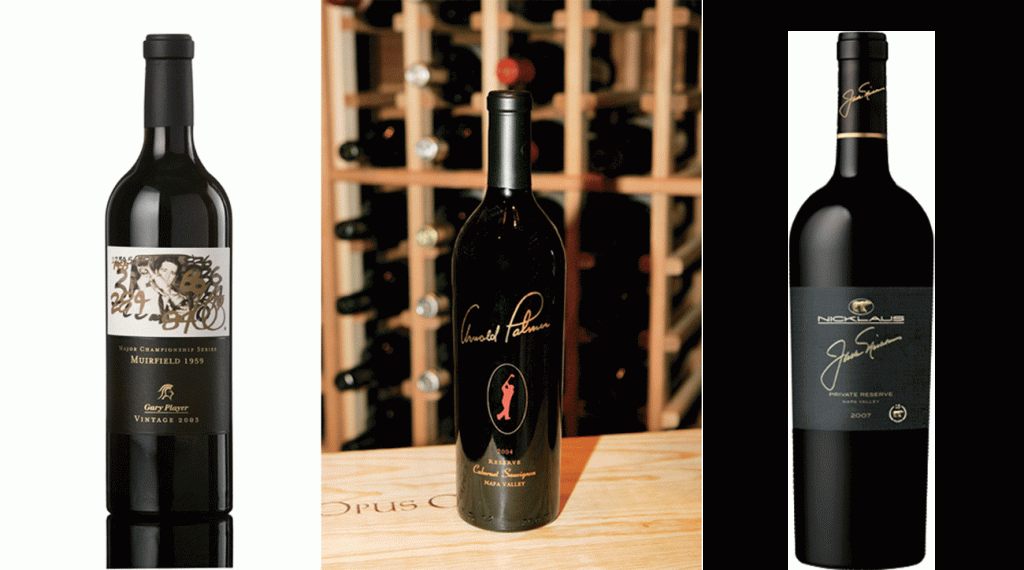
Player, Palmer and Nicklaus all have wines. Which legend wins the battle of the corks? Here are their ratings, from left to right.
1. Player’s Major Championship Series Muirfield 1959 Western Cape 2003 turns in an 89, per Wine Spectator.
2. Palmer’s Cabernet Sauvignon Napa Valley Reserve 2004 cards an 88.
3. The Golden Bear’s Napa Valley Private Reserve 2009 signs for a 90.
Assuming you get the idea that a higher score is better, we see squished grapes mirroring life, with the Golden One being just a little bit too good for the other fellas.
To receive GOLF’s all-new newsletters, subscribe for free here.



